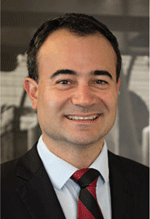Some economic estimates of gas-fired power generation in a carbon constrained Australia
Chai H. McConnell A B and Christian Dorgelo AA C/O Advisian Pty Ltd, Level 31, 12 Creek St, Brisbane City, Qld 4000, Australia.
B Corresponding author. Email: chai.mcconnell@advisian.com
The APPEA Journal 59(2) 647-650 https://doi.org/10.1071/AJ18093
Accepted: 7 March 2019 Published: 17 June 2019
Abstract
The future of Australia’s electricity industry has resulted in significant debate about the mix of electricity generating technologies. The Finkel Review and ensuing National Electricity Guarantee policy discussion have revealed divisions between key stakeholders over the future generating mix between renewable and fossil fuel power generation options. A portfolio of technologies will be required, including the need for gas-fired power generation with and without carbon capture and storage (CCS), to provide dispatchable synchronous electricity. Gas Vision 2050 has stated that CCS, along with biogas and hydrogen, will be one of the three transformational technologies affecting the gas industry going forward. Through the use of a techno-economic model, the costs for a hypothetical new-build gas-fired power plant in the Hunter Valley with and without CCS were estimated. The model is cross referenced with other authoritative publications including the CO2CRC Australian Power Generation Technology Report. The model considers the base-case scenario and sensitivity analysis of key cost drivers such as the domestic gas price and labour. The results of the model will enable key energy and gas industry stakeholders to make informed decisions about the vital role of gas as a power generation technology in Australia to deliver dispatchable synchronous electricity in a carbon constrained environment.
Keywords: carbon capture and storage, carbon constrained world, CCS, climate change, CO2CRC, dispatchable synchronous electricity, economic estimates, government policy, LCOE, levelised cost of electricity, low emission technology, NGCC, power generation.

Chai McConnell has 20 years of professional experience in providing strategic corporate advice in the commercial, government and research sectors. Chai leads the CCS practice in Advisian/WorleyParsons and in his role as Project Manager or Project Director, has delivered over 20 concept, business case, feasibility and FEED studies for multi-billion dollar hydrocarbon projects. In his private life, Chai is a farmer, company director and co-founder of a technology start-up. Chai holds a Masters of Public Policy from Harvard University’s Kennedy School (2003). Chai was the first Australian to be invited to, and graduate from, Harvard’s Executive Program for Leaders in Development (2000). Chai also holds an Honours Degree in Agricultural Economics from the University of New England where he also received its Young Distinguished Alumnus Award in 2000. Chai received the 2016 Champion in Diversity Award from the Queensland Resources Council/Women in Mining and Resources – Queensland, recognising his leadership in promoting diversity and inclusion in the sector. His experience includes Project Director of the largest funded project between the governments of Australia and China, a Feasibility Study into Post Combustion Capture (PCC); the 2017 Economic Assessment of Global CCS technologies for the Global CCS Institute and Project Manager and lead author of the 2009 Global CCS Institute’s Strategic Analysis of the Global Status of CCS. |

Christian Dorgelo has worked in the Australian energy sector for almost 10 years and is known for front-end strategic advice. He is a Senior Consulting Engineer with Advisian (of the WorleyParsons Group) and has a background in pre-feasibility and conceptual development. Christian graduated from the University of Queensland with Honours in Chemical Engineering in 2010 and has a background in complex, fast moving analysis. Notable roles include contributing to the Millmerran to Wandoan CO2 transport assessment, which was part of the China Post Combustion Capture pre-feasibility study, innovating in the coal-seam gas pipeline analysis methods for major Queensland oil and gas producers and numerous external consulting roles for private and government clientele. |
References
AEMC (2017). Final rule: managing power system fault levels. AEMC, Sydney.AEMO (2016). Fact Sheet, System strength. AEMO, Melbourne.
CO2CRC (2015). Australian Power Generation Technology Report. CO2CRC Limited, Melbourne.
Finkel, A, Moses, K, Munro, C, Effeney, T, O’Kane, M. (2017). Independent Review into the Future Security of the National Electricity Market: Blueprint for the Future. Commonwealth of Australia.
Nielson, L, Styles, J, Talberg, A, Tomaras, J. (2009). Carbon Pollution Reduction Scheme Bill 2009 [No. 2], Parliament of Australia, Department of Parliamentary Services.
Solstice (2017). Prospects for a HELE USC coal-fired power station. Solstice Development Services, Brisbane.
Waltzer, K. (2017). Fact Sheet and Analysis, The role of 45Q carbon capture incentives in reducing carbon dioxide emissions. Clean Air Task Force.
Wilson, B., Roberts, M., Reardon, S., Griffiths, J., and Creek, A. (2017). Gas Vision 2050; Reliable, secure energy and cost effective carbon reduction. Energy Networks Australia.


